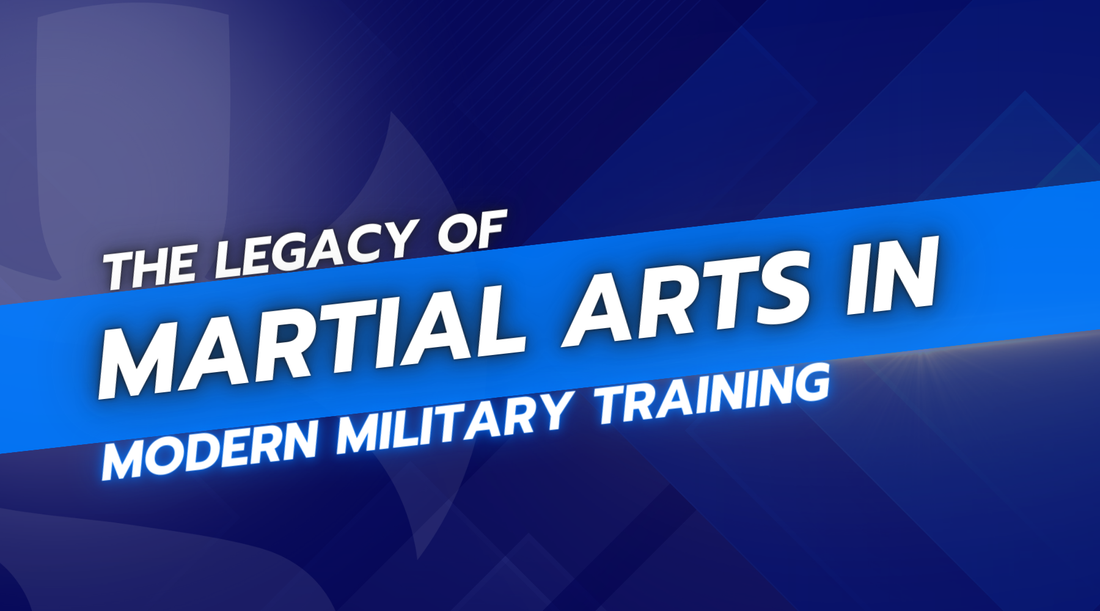
The Legacy of Martial Arts in Modern Military Training
Share
Martial arts have always been more than just a means of self-defense or sport; they are a critical component of military training that has evolved significantly over the centuries. This article explores the profound legacy of martial arts in modern military training, tracing its origins, transformation, and current practices, while also delving into the psychological and physical benefits for soldiers.
The Origins of Martial Arts in Warfare
Martial arts have deep roots in ancient civilizations, serving as essential tools for survival and combat. In ancient China, for example, martial arts were integral to the military strategies of dynasties.
Similarly, the Greeks used techniques from Pankration—a blend of boxing and wrestling—in their armies. Historical figures like Alexander the Great and Genghis Khan were renowned for their martial prowess, often integrating martial arts into their military strategies to conquer vast territories.
Martial Arts in Medieval Warfare
During the medieval period, martial arts were pivotal in shaping the combat skills of warriors such as samurais in Japan and knights in Europe. The samurai, adhering to Bushido, mastered martial arts like Kenjutsu and Jujutsu, while European knights honed their skills in swordsmanship and grappling.
These practices not only defined their combat techniques but also their codes of honor and discipline.
The Transformation During the Modern Era
The advent of firearms in the 16th century drastically altered the role of martial arts in warfare. While hand-to-hand combat became less prominent on the battlefield, martial arts continued to evolve, adapting to new military needs.
By the 19th and early 20th centuries, martial arts had transitioned from battlefield tactics to structured training regimens, incorporating physical fitness and discipline.
World War I and II: A New Era of Combat
The brutal close-quarters combat of World War I and II necessitated the revival of martial arts techniques. Soldiers in trench warfare and guerrilla operations relied heavily on hand-to-hand combat skills.
During World War II, the U.S. military developed the "Defendu" system, integrating various martial arts techniques to prepare soldiers for close combat scenarios.
Post-War Period and the Rise of Specialized Training
Post-World War II saw the development of specialized military combatives programs. Various martial arts disciplines, such as Judo, Karate, and Taekwondo, influenced these programs, emphasizing practicality and effectiveness.
The U.S. Army, for example, developed the Modern Army Combatives Program (MACP), which drew from Brazilian Jiu-Jitsu, Judo, and Muay Thai to train soldiers in hand-to-hand combat.
Key Martial Arts Techniques Used in Modern Military Training
- Brazilian Jiu-Jitsu: Known for its ground fighting techniques, it helps soldiers in grappling and submissions.
- Krav Maga: Developed by the Israeli Defense Forces, it focuses on real-world self-defense and combat scenarios.
- Muay Thai: This "art of eight limbs" enhances striking skills using fists, elbows, knees, and shins.
- Judo: Emphasizes throws and joint locks, making it effective for disarming and subduing opponents.
- Boxing: Enhances striking power and defensive maneuvers, critical for close-quarters combat.
Training Programs and Their Evolution
Military combatives programs have evolved to incorporate a diverse array of martial arts techniques. The U.S. Army Combatives Program, for instance, has undergone several iterations to improve its effectiveness.
Similarly, the British SAS incorporates martial arts into its rigorous training regimen, focusing on both physical conditioning and combat readiness. Russian Spetsnaz training includes Systema, which combines traditional Russian martial arts with modern techniques.
Psychological and Physical Benefits of Martial Arts in the Military
Martial arts training offers numerous benefits for military personnel. Physically, it enhances fitness, strength, and endurance, which are critical for the demands of combat.
Psychologically, martial arts build resilience, focus, and the ability to remain calm under pressure. These attributes are essential for soldiers facing high-stress situations.
Martial Arts in Special Forces Training
Special forces units require specialized training to meet their unique operational demands. Martial arts play a crucial role in this training, providing the skills needed for covert operations and high-risk missions.
Elite units like the Navy SEALs, Delta Force, and British SAS undergo extensive martial arts training to ensure they are prepared for any scenario.
Technological Advances and Their Impact on Martial Arts Training
Technology has revolutionized martial arts training in the military. Virtual reality (VR) and simulation training offer realistic combat scenarios, enhancing soldiers' preparedness.
Wearable technology, such as fitness trackers and biometric sensors, allows for precise monitoring of performance and progress, ensuring optimal training outcomes.
Challenges and Criticisms
Balancing traditional martial arts with modern combat needs presents several challenges. Some critics argue that traditional martial arts may not always be practical in contemporary warfare.
However, integrating these techniques with modern tactics and technology can address these concerns, ensuring their relevance and effectiveness.
Global Influence and Cross-Training
The global exchange of martial arts techniques has enriched military training programs worldwide. International training exchanges and the rise of Mixed Martial Arts (MMA) have introduced new techniques and approaches to military combatives.
This cross-training fosters innovation and adaptability in combat strategies.
The Future of Martial Arts in Military Training
Emerging trends suggest a continued integration of martial arts with advanced technologies. Future predictions include the use of artificial intelligence (AI) to develop personalized training programs and further advancements in VR simulations.
These innovations will likely enhance the effectiveness of martial arts training in the military.
Final Thoughts
The legacy of martial arts in military training is a testament to their enduring value. From ancient battlefields to modern combat zones, martial arts have evolved to meet the changing demands of warfare.
As technology continues to advance, martial arts will remain a crucial component of military training, blending tradition with innovation to prepare soldiers for the challenges of tomorrow.
